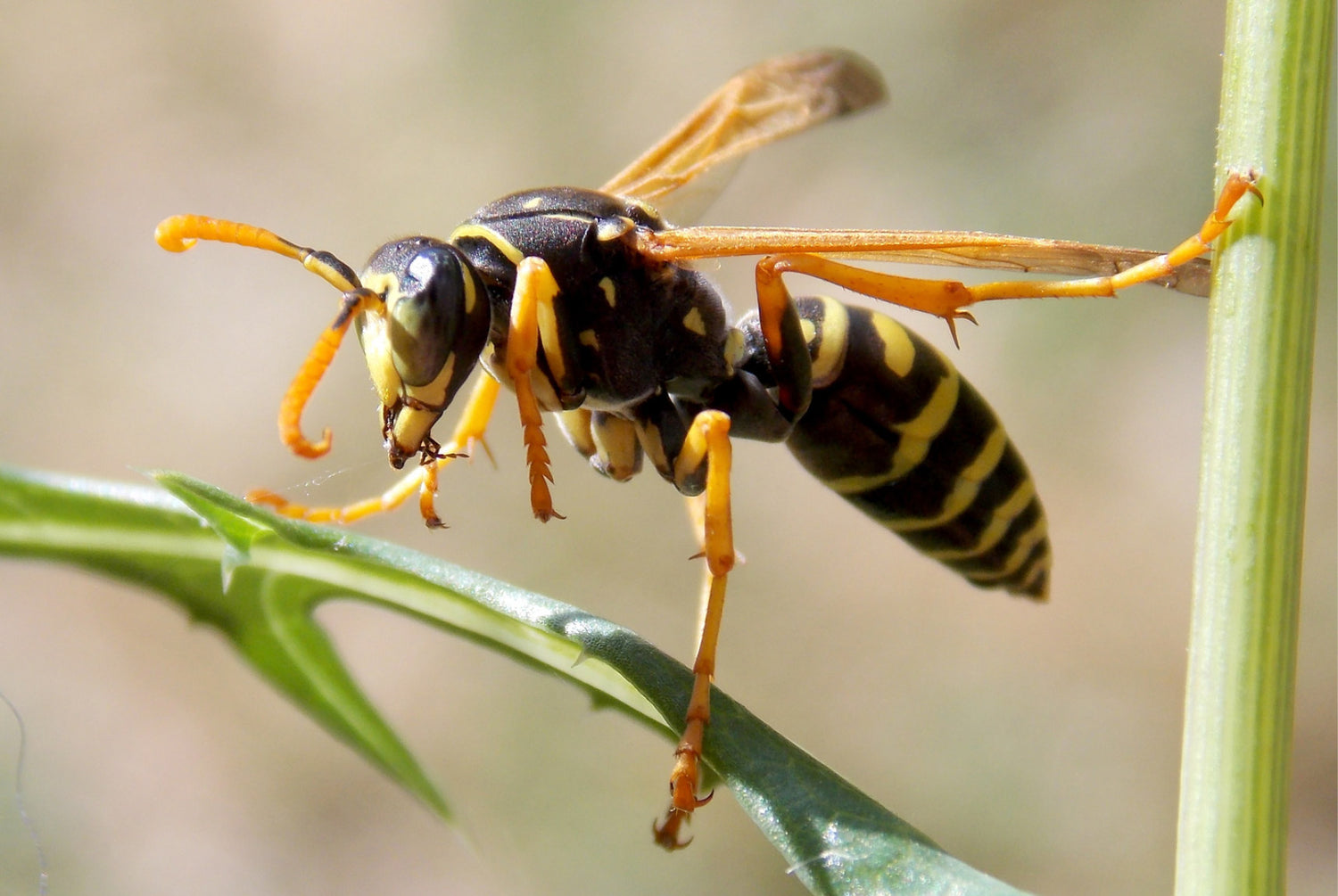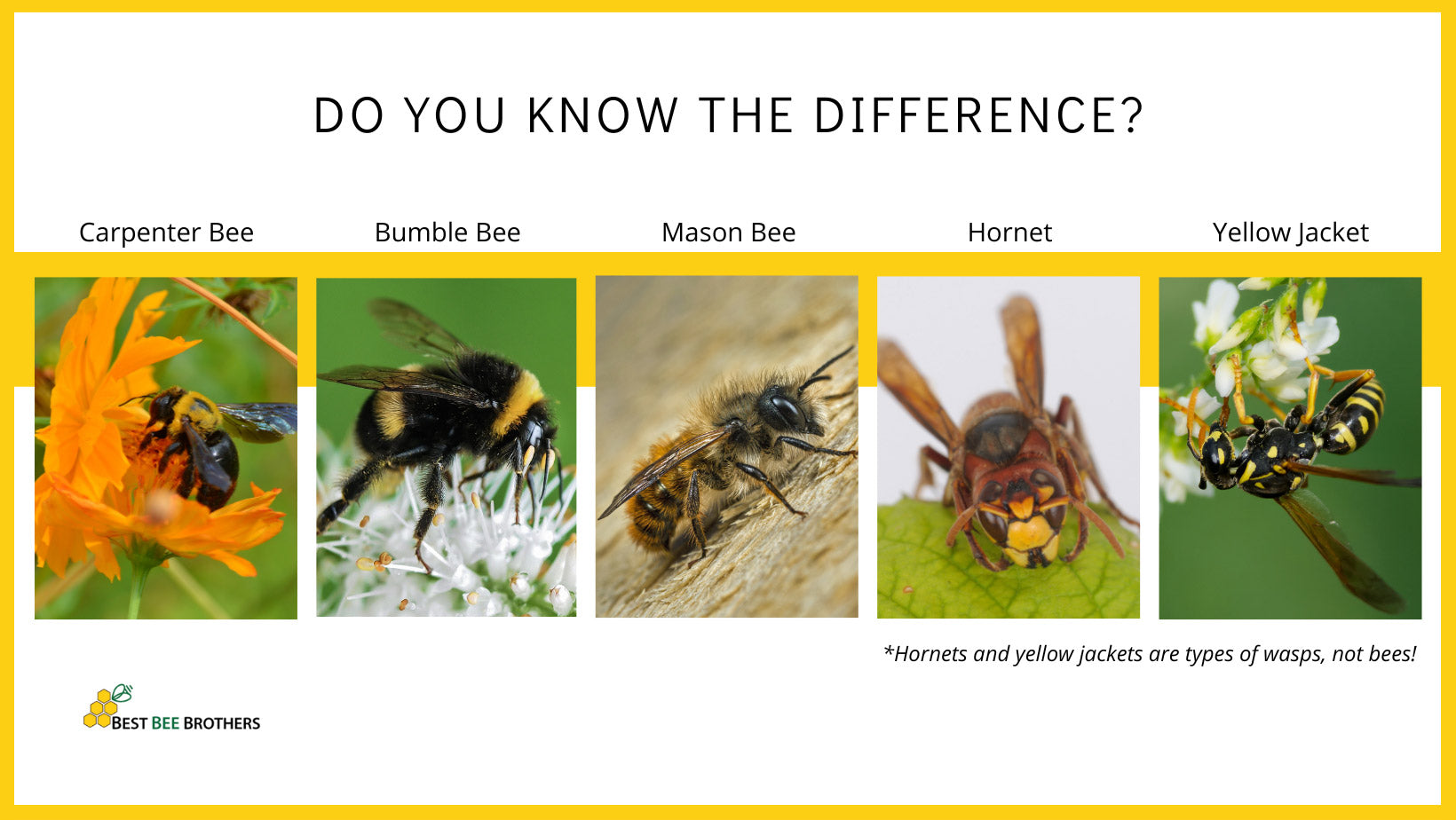Dealing with the menacing presence of a wasp – not to mention an entire hive of them – can be an intimidating and, well, less than ideal way to spend the balmy days of summer. And yet, all too often homeowners find themselves in just these kinds of situations. But wasp encounters go beyond the mildly unpleasant; many people have developed allergies to these creatures that can make the possibility of a sting all the more frightening, particularly if it results in a hospital visit.
So, exactly how can you prevent wasps from nesting in or around your home? Is there anything that you can do? And while we’re at it, why do wasps nest near your home in the first place? Let’s take a closer look!

Why Do Wasps Build Nests by Your Home?
Like most of us, wasps are generally averse to colder climates, opting instead to hibernate through the long months of winter. As the snow melts and spring turns to summer, the queen will emerge from her burrow and busy herself with the task of nesting. After she has selected a location, the queen will begin to lay the foundations of her future home by grinding wood in her strong mandibles. Add a touch of saliva, and you’ve got yourself a sticky pulp for building. But how does the queen select a nesting site? And how come it so often seems to be adjacent (if not downright on top of) your home? Well, there are a few different factors at play here.
Structural Defensibility
“Structural defensibility” is just a fancy way of saying how easily the nest can be defended from would-be predators. As the living matriarch of the hive, the queen must ensure that she finds a site where her nest will be safe from them. Unfortunately for us, some of the most suitable wasp nest locations just happen to be in or around man-made structures. Chimneys, eaves, wooden siding, deck railings…you name it! These are all favorites for the fresh-out-of-hibernation queen, as they offer considerable protection from the elements, as well as a bulwark against potential predators.

All-You-Can-Eat Leftovers
Unlike bees, which feed their larvae regurgitated pollen from plants, young wasps require a protein-rich diet to survive. Outside of human interference (and temptation), young wasp larvae are fed meat from soft-bodied insects, dead and decaying animals near the nest or unsuspecting airborne pests that get too close. The proximity of a wasp nest to a human household, however, presents another enticing option: your garbage. While most people wouldn’t think of wasps as dumpster-diving scavengers, when there’s a whole hive to feed and it’s dinnertime, the queen might find your leftovers appealing, and access to a nearly limitless supply of nutrients makes your house a compelling place for the queen to set up camp.
Abundant Resources
Remember how we said that the queen will begin construction of the nest by chewing wood into a pulp-like paste? Well, it’s to her benefit to set up near a place that has good access to the resources she needs. Wasps are especially fond of untreated softwoods that are easy to chew – but here again, they will take what they can find. Your deck, siding and outdoor furniture? Yep, those all check the boxes for her. The sheer variety of different woods that often comprise a home offer the busy queen a veritable cornucopia of building materials for her new hive.

How to Prevent Wasp Nests
While not at all fun to deal with, the good news is that preventing wasps from using your home as their summer getaway is relatively straightforward. While there are a number of tried-and-tested strategies to keep wasps away, we’re going to cover just three simple steps that you can take to better defend your home:
-
Cover it up!
One of the simplest ways to deter wasps from your home is simply to make it less inviting. Covering up your trash and removing access to other food waste and residue (like on a grill or fire pit) effectively removes the prospect of an all-you-can-eat buffet for the hive. Cleaning and covering your outdoor cooking equipment, as well as securely fastening the lids on your trash, are simple ways to remove an enticing element of a wasp habitat.
-
Seal it shut.
Much like with carpenter bees, wasps are opportunists and will gladly take advantage of any cracks in your wooden siding, overhangs, ledges or roofing to make their nest. Since the queen is the only member of the hive to survive the winter1, we recommend plugging any existing holes at the onset of spring, before she has a chance to lay her first batch of eggs and begin the colony building in earnest. While sealing up holes and cracks does not guarantee that you won’t see any winged intruders on your property this summer, at the very least, it does take away the easy, low-hanging fruit.
-
Go on the offensive.
By the time a wasp nest is up and running, we really do not advise trying to handle it on your own. At that point, the potential risk of subjecting yourself to that many stings can be dangerous, especially for anyone with a wasp allergy. Instead, going on the offensive early in the spring season can help prevent a nest from appearing near your home in the first place. To do this, we recommend using our Glass Wasp Trap and Wasp Deterrent Hive. The combination of both products packs a powerful punch against would-be invaders by deterring the less intrepid explorers (wasps are territorial and will seldom build a nest if there’s another hive nearby)2 and trapping the aggressive ones.
How to Prevent Wasps from Returning
If you noticed a nest during your spring cleaning inspection and were able to remove it in time, you might be wondering what else you can do to prevent wasp nests from returning in the future. Beyond what’s already been discussed in initial prevention, how to prevent wasp nests from coming back to your home can be handled in a few simple steps.
First, we recommend that you keep any hummingbird feeders or nectar-rich flowers away from your backyard living spaces. Wasps love sugary substances, so keeping them far from your home is a great way to minimize unwanted encounters. The second thing you can do is ensure that any accidental spills or mishaps are cleaned up. Knocking over a soda can, spilling some beer in the grass, or forgetting to clean up the scraps of last night’s cookout is like turning on a flashing neon sign, inviting wasps to come join the party.
Finally, ridding your home and backyard area of other insect infestations can be a great wasp deterrent. Remember, young wasps need lots of protein for their development, and a house with a caterpillar, ant or spider infestation could offer an excellent food source for a wasp colony. Inspecting your property at the beginning of the season to assess whether you have an infestation, and then managing or eliminating those problems, can help you stay one step ahead of hungry wasps.
- Stu Benedict, “How Do Wasps Make Their Nests?,” Truly Nolen Pest Control, October 28, 2021, https://www.trulynolen.ca/how-do-wasps-make-their-nests/.
- “Wasp Nests - What a Nest Looks like and What to Do about Them,” BuzzAboutBees.net, January 29, 2021, https://www.buzzaboutbees.net/wasp-nests.html.









Leave a comment
All comments are moderated before being published.
This site is protected by hCaptcha and the hCaptcha Privacy Policy and Terms of Service apply.